Freezing mushrooms is a great storage technique. Since fresh mushrooms only last up to a week in the refrigerator, freezing lets you save them for a much longer period of time.
Edible mushrooms should be cooked before being frozen or they’ll become mushy when reheated. A few extra minutes of cooking may save you a soggy mushroom in the end.
Always add frozen mushrooms directly to a dish without thawing. Three different cooking methods to use before freezing mushrooms are sautéing, blanching, and steaming.
Sauté
This involves cooking pieces of mushrooms quickly at a high heat with a little fat. Since you will be freezing the mushrooms after they cool, you don’t have to be quite as exact with ingredient amounts as you would with a traditional mushroom sauté.
- Add 2 tbsp of olive oil or butter to a low skillet.
- Warm the skillet on medium-high heat and spread the oil around the surface.
- Add chopped or sliced mushrooms, taking care not to overcrowd the skillet. Allow to cook until almost done, no more than 5 minutes.
- Remove mushrooms from the heat and allow to cool.
- Place in a container and freeze. Leave a little space at the top of the container in case of any expansion during freezing.
To use, simply remove the desired amount and add to any mushroom recipe. With this method they’ll maintain a more firm texture than with blanching or steaming.
The downside is that due to the fats involved, sautéed mushrooms won’t last as long in the freezer. Try to use them within 9 months for the best quality. Check for freezer burn before using.
Blanching
Blanching, or parboiling, is the process of cooking something in boiling water for a timed period, then plunging it into cold water to stop it from cooking further. This stops enzymatic actions that degrade the color, flavor, and texture of the mushrooms. It also can kill bacteria and remove dirt.
- Bring a large pot of water to a boil. The National Center for Home Food Preservation recommends one gallon for every pound of vegetables.
- While the water is heating, wash and chop your mushrooms. Since you’ll be putting them in boiling water you don’t have to worry about whether or not you should wash them!
- When the water reaches a boil put the mushrooms in the pot. Wait until the water starts to re-boil, then cook another 1 to 2 minutes.
- Drain the mushrooms in a colander and put them in cold water. When they’re cool to the touch, drain well and place in containers. Leave a little space at the top in case of any expansion during freezing.
Freezing mushrooms after blanching works best for mushroom soup recipes. To use, add the frozen mushrooms to the soup 20 minutes before it’s done.
Blanched mushrooms will keep in the freezer for up to a year.
Freezing Mushrooms after Steaming
Steaming is the process of cooking something in steam instead of a liquid. Steamed mushrooms hold their flavor and texture better than blanched mushrooms.
Mushrooms are often given an anti-darkening treatment before steaming to retain their color. To do this, cover them in water with a tsp of lemon juice added for every pint of water. Stir and let the mixture sit for 5 minutes.
- To begin, you’ll need a pot with a lid and a basket that will hold the mushrooms at least 3 inches above the bottom of the pot.
- Put 2 inches of water in the pot and bring to a boil.
- Place the mushrooms in the basket, taking care that the holes in the basket aren’t too big for the mushroom pieces that you have.
- Place the lid on the pot and let it steam for 3 minutes, up to 5 minutes if using whole mushrooms.
- Remove the mushrooms and halt the cooking process by putting them in a pot of cold water. When they are cool to the touch, drain well and place in containers. Leave a little space at the top of the container in case of any expansion during freezing.
Freezing mushrooms after steaming works for most mushroom recipes. To use, add the frozen pieces to any dish. You may add these to a stir-fry, but take care not to add too many at once and bring the temperature of the pan down.
Steamed mushrooms will keep in the freezer for up to a year.
Finally, always use proper packaging when freezing cooked mushrooms. Whether plastic containers, jars, or freezer bags, they should be air-tight and not crack at low temperatures.

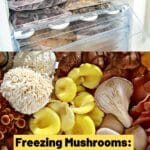
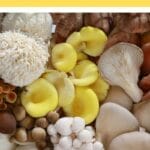
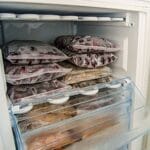
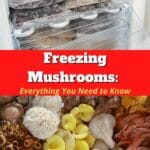
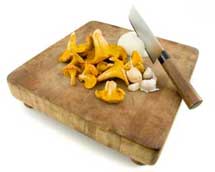
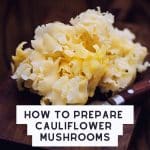
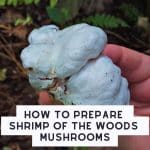
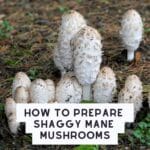

Leave a Reply